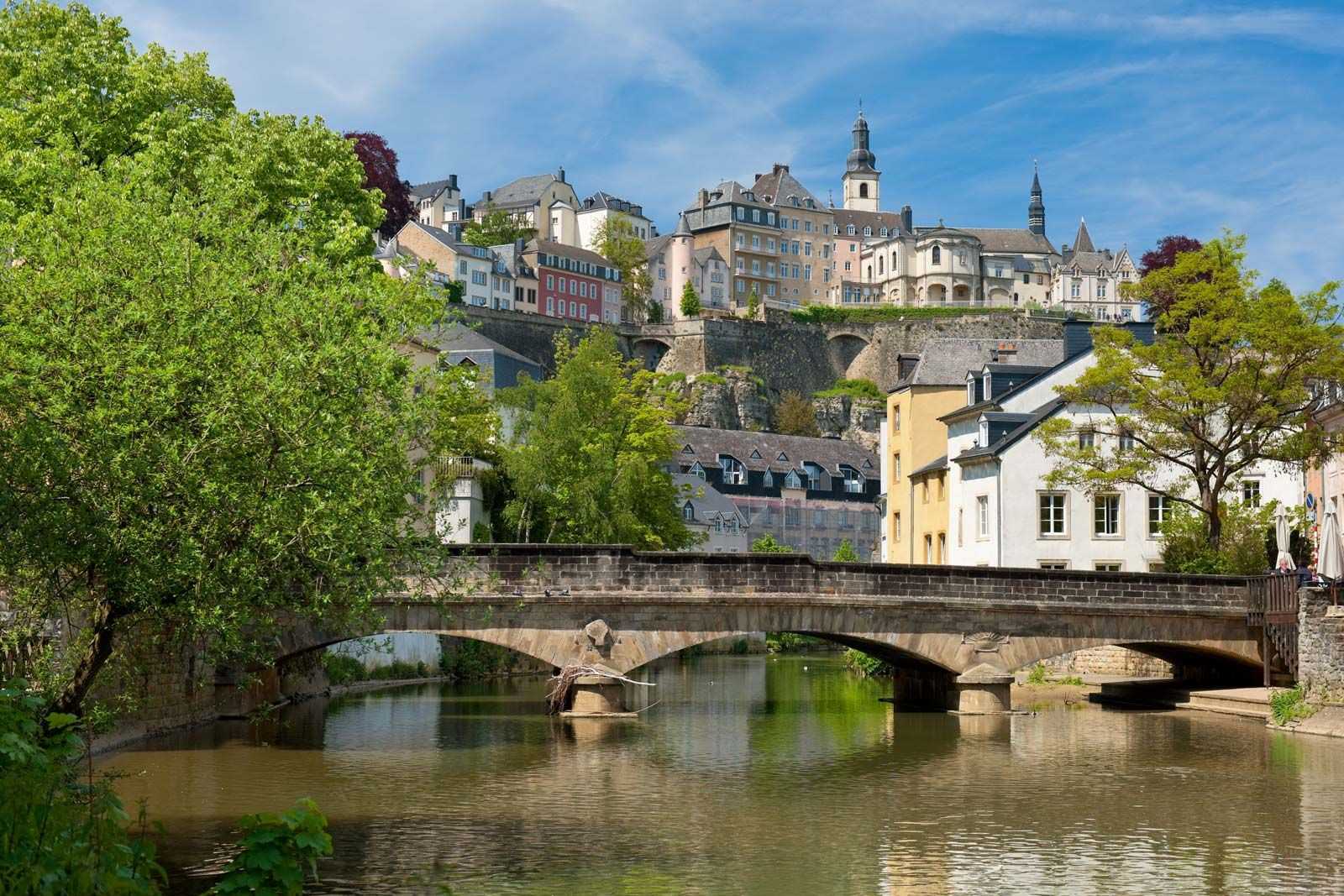Luxembourg, officially the Grand Duchy of Luxembourg, is a small landlocked country in Western Europe, and often raises the question: “Where Is The Luxembourg exactly located?”. Nestled between Belgium, France, and Germany, Luxembourg occupies a strategic and historically significant position in the heart of Europe. Understanding its geographical context is key to appreciating its diverse landscapes and unique climate.
The country is geographically divided into two main regions: the Oesling in the north and the Bon Pays (Gutland) in the south, each contributing distinct characteristics to Luxembourg’s overall identity. This division influences everything from the terrain and soil composition to population density and economic activities.
The Northern Oesling: Part of the Ardennes
The northern third of Luxembourg, known as the Oesling, is essentially a part of the larger Ardennes mountain range, which predominantly stretches across southern Belgium. This region presents a stark contrast to the south, characterized by a plateau averaging around 1,500 feet (450 meters) in elevation. The geological makeup of the Oesling consists mainly of schists and sandstones, contributing to its rugged and forested landscape.
The Oesling’s terrain is defined by deeply carved valleys created by a network of rivers, with the Sûre River (also known as the Sauer) being the most prominent. The Sûre flows eastward through the north-central part of Luxembourg before merging with the Moselle River, marking the border with Germany. This area, with its dense forests and valleys, is dotted with the romantic ruins of numerous castles, drawing a significant number of tourists to experience the historical charm of Luxembourg.
Historically, the soils in the Oesling were relatively infertile due to the mountainous terrain. However, the introduction of basic-slag fertilizer in the 1890s, a byproduct of Luxembourg’s robust steel industry, dramatically improved agricultural productivity in the region.
The Southern Bon Pays: The “Good Land”
In contrast to the Oesling, the southern two-thirds of Luxembourg is called the Bon Pays, or Gutland, which translates from French and German to “Good Land.” This region boasts a more varied topography and a lower average elevation of about 800 feet (approximately 245 meters). The Bon Pays is considerably more populated than the Oesling and is the economic heartland of Luxembourg, housing the capital city, Luxembourg City, and other industrial centers like Esch-sur-Alzette.
The Alzette River valley, flowing northward through the center of the Bon Pays, acts as a central axis around which much of the country’s economic activity is centered. Luxembourg City itself is situated along the Alzette River, before it joins the Sûre further to the north.
The Bon Pays also features the Müllerthal region in its east-central part, known for its extensive beech forests and unique sandstone formations creating a ruiniform topography, appealing to nature enthusiasts and hikers. Luxembourg’s eastern border with Germany is naturally defined by a series of rivers: the Our, Sûre, and Moselle, from north to south respectively. Notably, the slopes of the Moselle River valley, carved from chalk and calcareous clay, are ideal for vineyards. This area, basking in ample sunshine, is often referred to as “Little Riviera,” renowned for its wine production. Beyond vineyards, the fertile lands of the Moselle and lower Sûre valleys are also excellent for pasturelands. Historically, the extreme southwest of Luxembourg, bordering France, was significant for its iron mines, now largely inactive.
Luxembourg’s Mild Climate
Luxembourg enjoys a mild climate characterized by significant rainfall throughout the year. There are slight variations in climate between the north and south; the Oesling in the north tends to be slightly colder and more humid compared to the Bon Pays in the south.
In Luxembourg City, average temperatures range from the mid-30s Fahrenheit (around 0.7 °C) in January to the low 60s Fahrenheit (about 17 °C) in July. The Oesling region typically experiences slightly lower extremes in both summer and winter. Precipitation levels also vary across the country. The Oesling generally receives more rainfall than the Bon Pays. The highest rainfall, approximately 40 inches (1,000 mm), is recorded in the southwest, while the southeast receives the least, around 27 inches (about 685 mm). The Moselle River valley, sheltered by its geography, benefits from a milder and sunnier microclimate compared to other parts of Luxembourg, further enhancing its suitability for viticulture.
In conclusion, Luxembourg’s location in Western Europe endows it with a diverse geography, from the Ardennes foothills in the north to the fertile “Good Land” in the south. This geographical diversity, coupled with a mild and relatively wet climate, shapes Luxembourg’s landscapes, agriculture, and regional characteristics, making it a fascinating country to explore.

